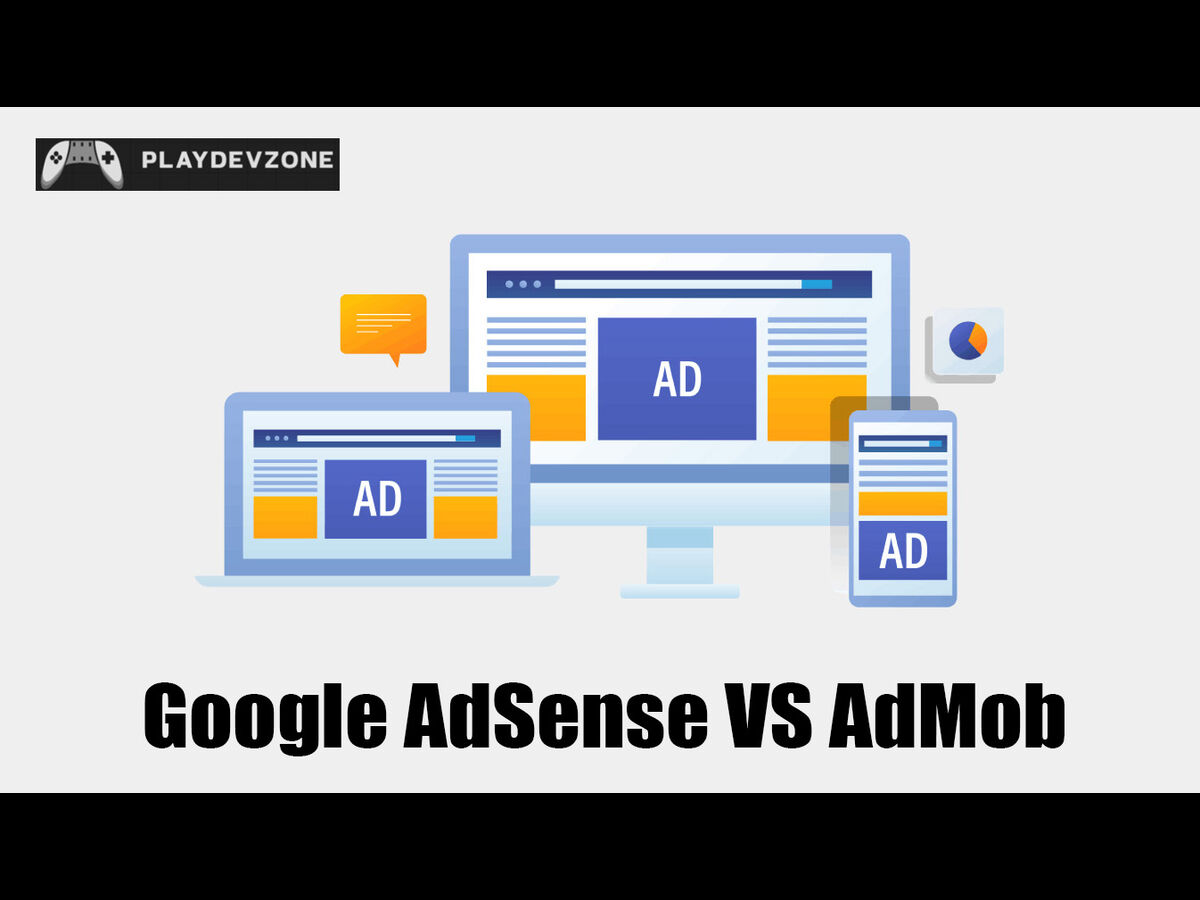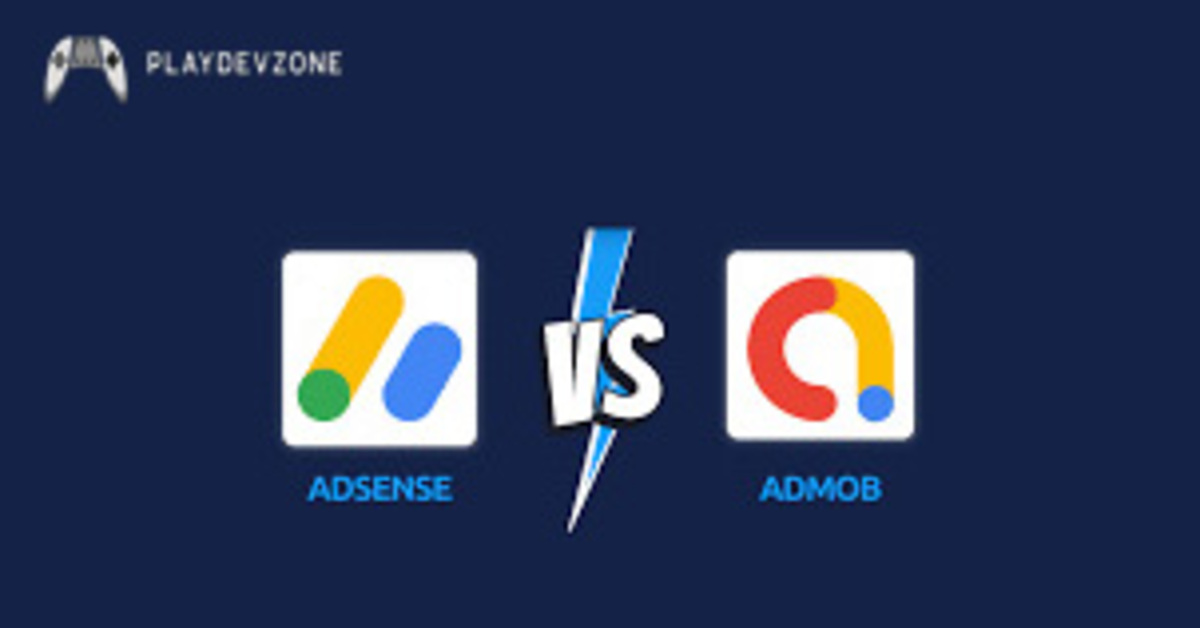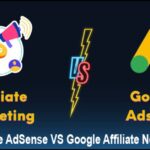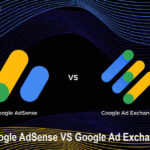Monetizing your mobile game is no longer optional; it’s essential. But as a game developer, choosing the right ad platform can make or break your revenue potential ( Google AdSense VS AdMob ).
That’s where two major players step in: Google AdSense and AdMob.
While both are powerful advertising tools backed by Google, they serve very different purposes, and knowing which one is right for your game could be the key to unlocking long-term success.

In this blog post, we’ll dive deep into the AdSense vs AdMob debate, comparing their features, strengths, and ideal use cases for game developers.
Whether you’re an indie creator or managing a growing game studio, understanding how each platform works and which aligns best with your goals will help you maximize ad revenue without compromising user experience.
What is Google AdSense?
Google AdSense is a popular advertising platform that allows website owners and content creators to earn money by displaying targeted ads on their websites, blogs, or online platforms.
Powered by Google’s vast ad network, AdSense automatically matches ads to your content and audience based on relevance and user behavior ( Google AdSense VS AdMob ).
It supports various ad formats, including display, text, and rich media, providing flexible options to enhance user experience while generating revenue.
For game developers who manage web-based games or companion websites, AdSense can be an effective way to monetize traffic without disrupting the user journey.
It’s easy to set up, requires no direct advertiser relationships, and pays based on impressions or clicks, making it a passive yet assertive income stream.
If your game project extends to the web, AdSense could be a brilliant addition to your monetization strategy.
What is Google AdMob?
Google AdMob is a mobile advertising platform by Google explicitly designed for app and game developers.
It allows you to monetize your mobile games by displaying in-app ads from millions of advertisers in real time.
With support for various ad formats like banner ads, interstitials, rewarded video ads, and native ads, AdMob helps you earn revenue while maintaining a smooth and engaging user experience.
What sets AdMob apart is its powerful mediation and optimization tools, which let you maximize earnings by managing multiple ad networks in one place.
It also integrates seamlessly with Firebase, offering deep insights into user behavior and ad performance ( Google AdSense VS AdMob ).
If you’re developing mobile games, AdMob is a purpose-built solution to turn your gameplay experience into a sustainable revenue stream without sacrificing the fun for your players.
Key Differences Between AdSense and AdMob
While both Google AdSense and Google AdMob are ad platforms from Google, they serve very different purposes.
AdSense is designed for monetizing web-based content like blogs, websites, and online articles, whereas AdMob is explicitly built for mobile apps and games ( Google AdSense VS AdMob ).
AdSense works by placing ads on your web pages, earning revenue through impressions and clicks.
AdMob, on the other hand, integrates directly into your mobile game via SDK and supports ad formats like rewarded video, interstitial, and native ads.
Another key difference is AdMob’s advanced mediation tools, which allow developers to optimize earnings by managing multiple ad networks ( Google AdSense VS AdMob ).
If your game is mobile-based, AdMob is the better fit. But if you also have a game website or blog, AdSense can complement your monetization strategy effectively.
Monetization for Game Developers: Which One Works Better?
When it comes to monetization for game developers, the choice between Google AdSense and AdMob depends on your platform.
For mobile games, AdMob is the clear winner. It’s built specifically for in-app environments, offering ad formats like rewarded videos, interstitials, and native ads that integrate seamlessly into gameplay.
These formats not only boost revenue but also enhance user engagement when used correctly ( Google AdSense VS AdMob ).
On the other hand, AdSense is better suited for game-related websites, blogs, or browser-based games where traditional display ads work best.
If your game project includes both mobile and web platforms, combining both tools can maximize your earnings.
Ultimately, AdMob provides mobile developers with more control, enhanced optimization tools, and higher earning potential, making it the top choice for most modern game monetization strategies.
Pros and Cons of Each Platform
Both Google AdSense and Google AdMob offer effective monetization solutions, but each comes with its own strengths and limitations.
AdSense is ideal for web-based content, offering easy setup, automatic ad placement, and access to a vast advertiser network. However, it’s not suitable for in-app environments, and ad customization is limited.
On the other hand, AdMob is specifically designed for mobile apps and games, offering advanced features such as rewarded ads, ad mediation, and in-depth analytics through Firebase.
It provides more control and higher revenue potential in mobile ecosystems. The downside? Integration can be more complex and requires regular optimization to ensure optimal performance.
In short, AdSense is great for web traffic, while AdMob is built for mobile app monetization ( Google AdSense VS AdMob ).
Choosing the right platform depends on where and how your audience engages with your game content.
Common Mistakes Game Developers Make in Monetization
Many game developers dive into monetization without a clear strategy, leading to poor results and frustrated users.
One of the most common mistakes is overloading the game with ads, which can hurt retention and lead to uninstalls.
Others fail to choose the right platform using AdSense in mobile games, for example, which can result in poor ad performance.
Ignoring ad placement is another pitfall; intrusive or poorly timed ads can disrupt gameplay.
Additionally, some developers neglect to A/B test ad formats or track performance metrics, missing valuable optimization opportunities ( Google AdSense VS AdMob ).
Lastly, relying solely on one revenue stream, rather than combining ads with in-app purchases or subscriptions, can limit earning potential.
A well-balanced monetization strategy is crucial for maximizing revenue without compromising user experience.
Best Practices for Game Monetization with Google Ads
To successfully monetize your game with Google Ads, it's essential to follow best practices that balance revenue generation with user experience.
Start by selecting the right ad formats rewarded video ads often perform best, as they provide value to players without interrupting gameplay.
Use native and interstitial ads strategically during natural breaks or level transitions to avoid frustrating users ( Google AdSense VS AdMob ).
Integrate AdMob’s mediation tools to increase competition among ad networks and boost revenue.
Always A/B test ad placements and formats to find the most effective setup for your audience. Monitor performance with Firebase Analytics to gain insights and optimize in real time.
Most importantly, keep the player experience at the core of your strategy non-intrusive, well-timed ads lead to higher retention and long-term earnings.
Which is Better for You?
Choosing between Google AdSense and AdMob depends on your game’s platform and audience.
If you’re developing a mobile game, AdMob is the better choice it’s built specifically for in-app environments and offers advanced tools like rewarded ads, ad mediation, and Firebase integration for real-time insights.
However, if your focus is on web-based games, gaming blogs, or companion websites, AdSense is more suitable, allowing you to monetize web traffic with minimal setup.
In some cases, using both platforms together AdMob for your game and AdSense for your site can maximize overall revenue.
The key is to align your monetization strategy with your users' experience and platform behavior ( Google AdSense VS AdMob ).
Take the time to analyze your goals and audience, then choose the platform that best supports your growth and profitability.
FAQ (Frequently Asked Questions)
What pays better than AdSense?
While Google AdSense is a reliable and beginner-friendly platform, several alternatives can offer higher earnings, depending on your niche, traffic quality, and ad strategy.
Platforms like Media.net, Ezoic, and AdThrive often pay better than AdSense for websites with high-quality content and consistent traffic.
For mobile apps and games, Google AdMob or Unity Ads typically outperform AdSense in terms of CPM and user engagement.
Additionally, affiliate marketing and sponsored content can yield significantly higher revenue if targeted correctly.
The key to earning more is testing different platforms, optimizing ad placements, and focusing on user experience ( Google AdSense VS AdMob ).
What pays better than AdSense often depends on how well you match your monetization strategy to your content and audience.
How to earn $100 a day with Google AdSense?
Earning $100 a day with Google AdSense is achievable with the right strategy and consistent effort.
The key is to drive high-quality, targeted traffic to a content-rich website. Focus on a profitable niche with high CPC (Cost-Per-Click) rates, such as finance, tech, health, or digital marketing.
Create SEO-optimized, valuable content that ranks well in search engines and attracts organic visitors ( Google AdSense VS AdMob ).
Implement innovative ad placements to maximize CTR (Click-Through Rate) without disrupting user experience.
Use tools like Google Analytics and Search Console to track performance and refine your strategy.
Typically, to hit $100/day, you’ll need anywhere from 10,000 to 50,000 daily visitors, depending on your niche and CPC.
Stay consistent, keep improving content quality, and optimize your site to boost both traffic and ad revenue.
Is there anything better than AdMob?
While Google AdMob is one of the most popular and reliable ad platforms for mobile app and game monetization, some alternatives may perform better depending on your app type, audience, and monetization goals.
Platforms like Unity Ads, AppLovin, ironSource, and Meta Audience Network often offer higher eCPMs, better fill rates, or more tailored ad formats, especially for gaming apps.
Some also provide more advanced user segmentation, cross-promotion tools, or rewarded video options that can enhance engagement and revenue.
However, what’s “better” than AdMob depends on your specific needs.
Many successful developers utilize mediation tools to integrate multiple ad networks and optimize revenue. In some cases, a mix of AdMob and other platforms delivers the best results.
Do I need AdSense for AdMob?
No, you don’t need a separate AdSense account to use Google AdMob.
While both platforms are part of the Google Ads ecosystem, AdMob operates independently and is designed specifically for monetizing mobile apps and games.
When you sign up for AdMob, your earnings and ad management are handled directly within the AdMob dashboard ( Google AdSense VS AdMob ).
However, both platforms share the same Google Payments account, so if you already have an AdSense account, it can be linked for payment purposes.
If you’re only monetizing mobile apps, AdMob alone is sufficient.
But if you also have a blog or game-related website, consider using both AdSense and AdMob to maximize your overall revenue.
How much does AdSense pay per 1,000 views?
The amount Google AdSense pays per 1,000 views, known as CPM (Cost Per Mille), can vary widely based on your niche, audience location, and content quality.
On average, AdSense pays between $1 $10 per 1,000 views, but high-paying niches like finance, insurance, or technology can earn significantly more, sometimes exceeding $20 CPM.
Traffic from countries like the USA, UK, Canada, and Australia typically yields higher earnings compared to traffic from other regions.
To increase your CPM, focus on creating high-quality, SEO-optimized content, improving user engagement, and attracting traffic from valuable geographic locations ( Google AdSense VS AdMob ).
Remember, earnings also depend on click-through rates (CTR) and advertiser demand in your niche.
Is it possible to earn $1000 per day?
Yes, it is definitely possible to earn $1,000 per day, primarily through platforms like Google AdSense, AdMob, affiliate marketing, or digital product sales. However, it requires a strategy, scale, and consistency.
Many successful content creators, bloggers, and app developers achieve this level of income by targeting high-paying niches, driving massive traffic, and optimizing ad placements for maximum CTR and CPC ( Google AdSense VS AdMob ).
For example, a popular mobile game using AdMob or a high-traffic blog in finance or tech using AdSense can generate thousands daily.
However, reaching this goal involves building valuable content, mastering SEO, and continually analyzing performance.
It’s not overnight income, but with the right approach, $1,000/day is a realistic milestone.
Conclusion
When it comes to monetizing games, the choice between Google AdSense and AdMob ultimately depends on your platform and audience.
If you’re developing a mobile game, Google AdMob is clearly the better fit, offering tailored ad formats like rewarded videos, interstitials, and native ads that integrate smoothly with gameplay.
On the other hand, if you run a website, blog, or web-based game, Google AdSense provides a simple and effective way to earn from web traffic ( Google AdSense VS AdMob ).
For game developers serious about maximizing revenue, using both platforms, AdMob for mobile apps and AdSense for web properties, can create a powerful, diversified monetization strategy.
Choose the one that aligns with your goals, test what works best, and always keep the user experience at the heart of your monetization efforts.











